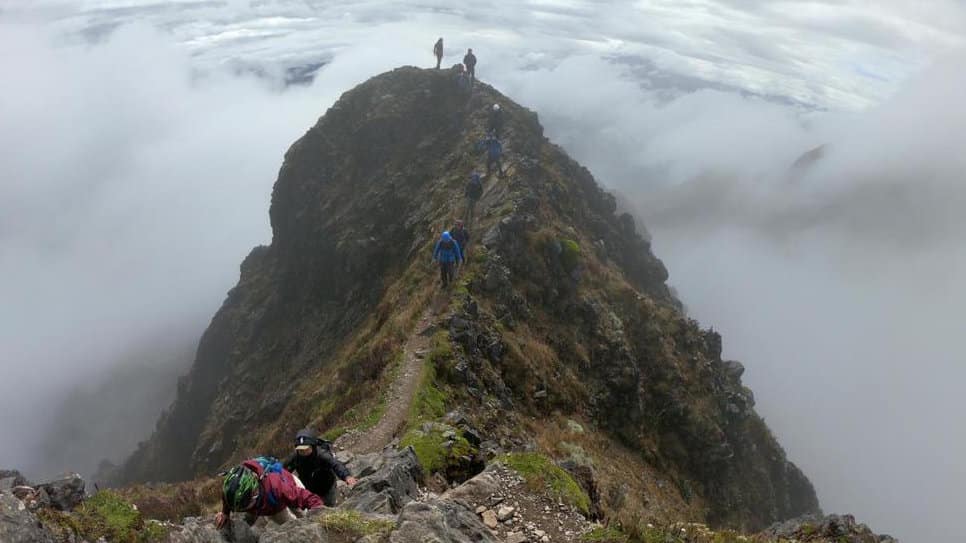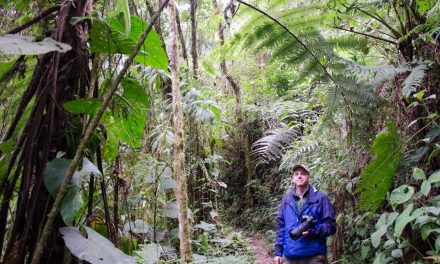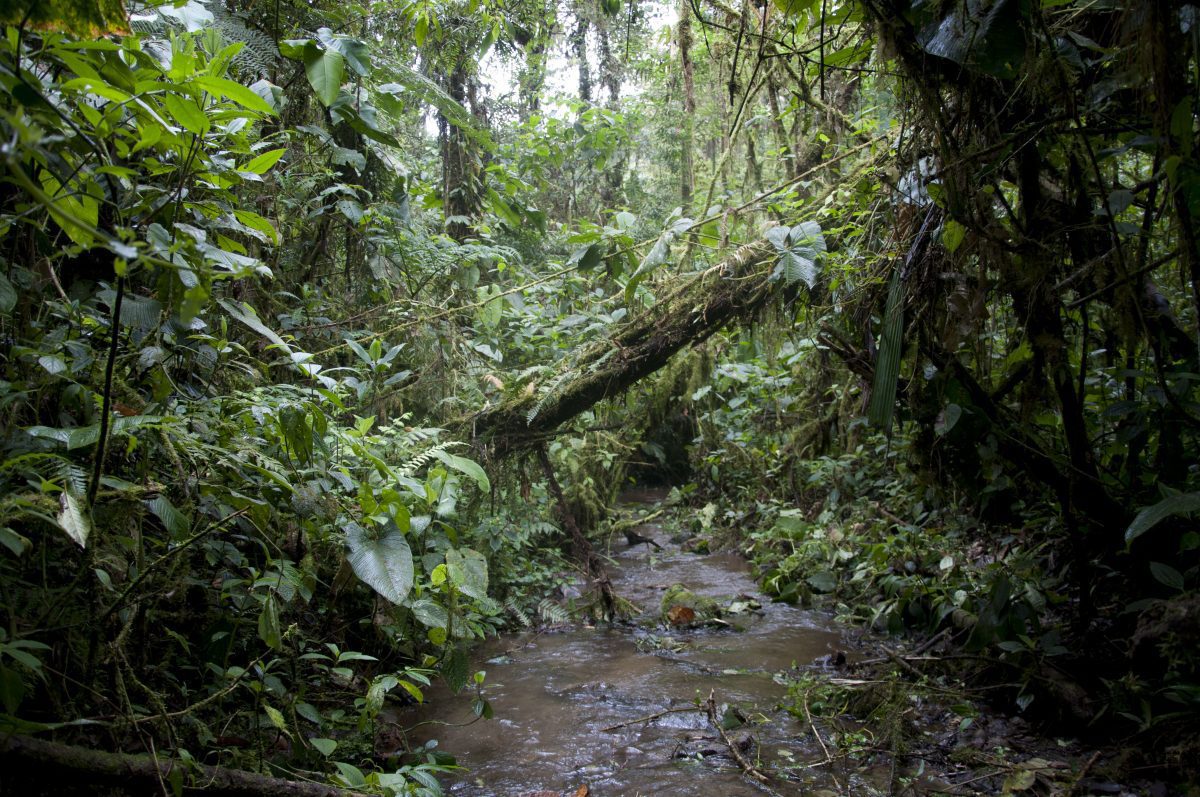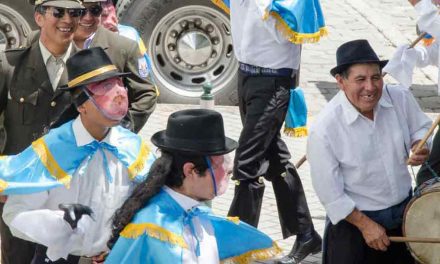As responsible travelers evolve, so do the stories we share.
This article is part of our living archive — trusted content we continue to care for.
First published on April 7, 2021 • Last updated on October 25, 2021.
“Life gives you surprises, surprises give you life” says an old song by Rubén Blades echoing precisely what I felt during my visit to the colossus YAYA IMBABURA (yaya = father in Kichwa of northern Ecuador).
Join me on a small imaginary trip to the “Province of the Lakes”, Imbabura. This enigmatic province is the cradle of one of the most prosperous and best organized indigenous communities in the country. They live in the foothills of the wise Padre Imbabura following in the footsteps of their ancestors, the Karanqui.
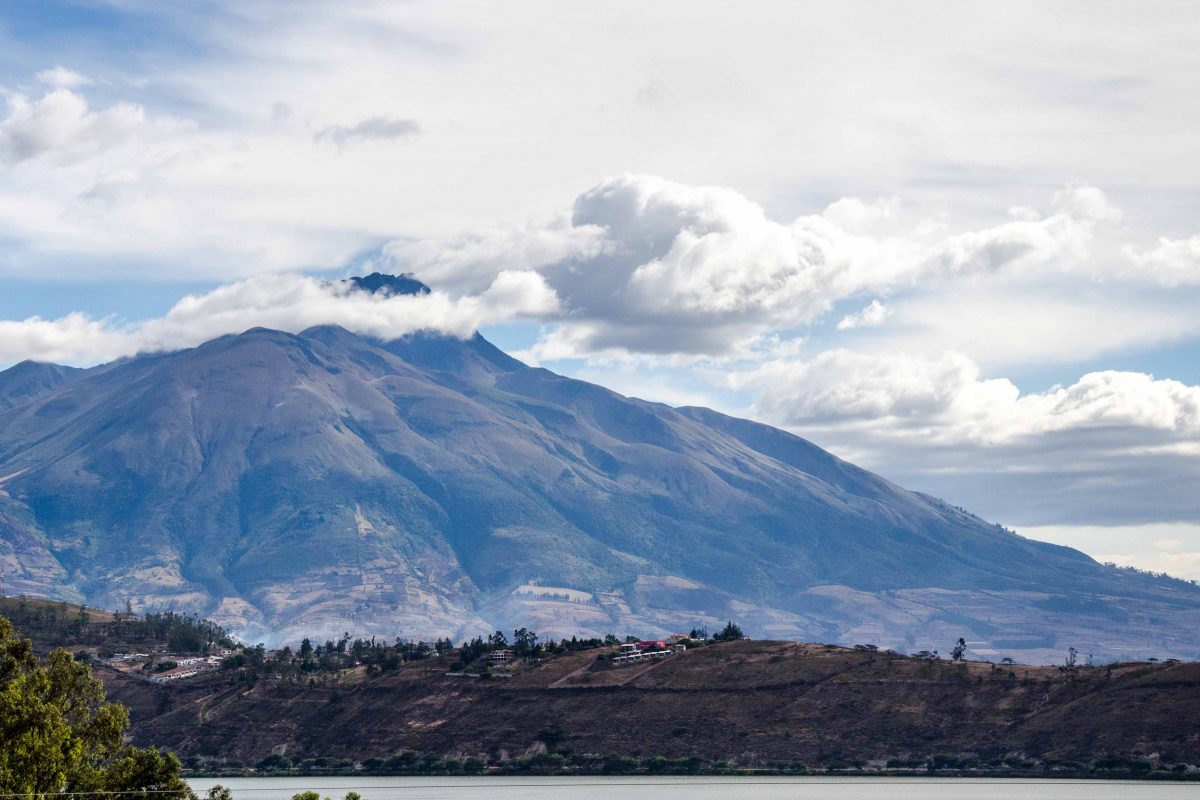
Imbabura Province
The province is located north of the capital (Quito), approximately two hours away by bus or private vehicle. The route is very picturesque with landscapes full of mountains, hills, snow-capped volcanoes, roses, and the tasty biscochos of Cayambe (an obligatory stop on the route to enjoy them). Depending on the season, and especially in the dry months that go from June to September, the Cayambe Volcano is visible for much of the way, its coquettish silhouette always inviting us to enjoy an extra photography stop.
When the third highest volcano in Ecuador recedes in the distance, Cayambe (5,790 masl), we arrive at the provincial border between Pichincha and Imbabura. The interesting thing is that there are two routes from Quito to get to the same place; the first follows the Panamericana Norte; the second on the road from Guayllabamba to Cayambe, finally to the provincial border with Imbabura.

From the start, this province welcomes us with a huge lake that rather resembles a work of art painted at the foot of the Imbabura Volcano. Imbabura is also home to the peaks of the curious Fuya-Fuya and the Mama Cotacachi (the latter, according to local tradition, is the wife of the Yaya Imbabura).
It is well-known that the famous indigenous market takes place every Saturday in the city of Otavalo beginning with a busy animal market very early in the morning located at the northern exit of the town. The artisan market, which is an amalgam of colors and crafts made by Otavaleños and other native communities in Ecuador and even Peru, starts mid-morning and lasts most of the day.

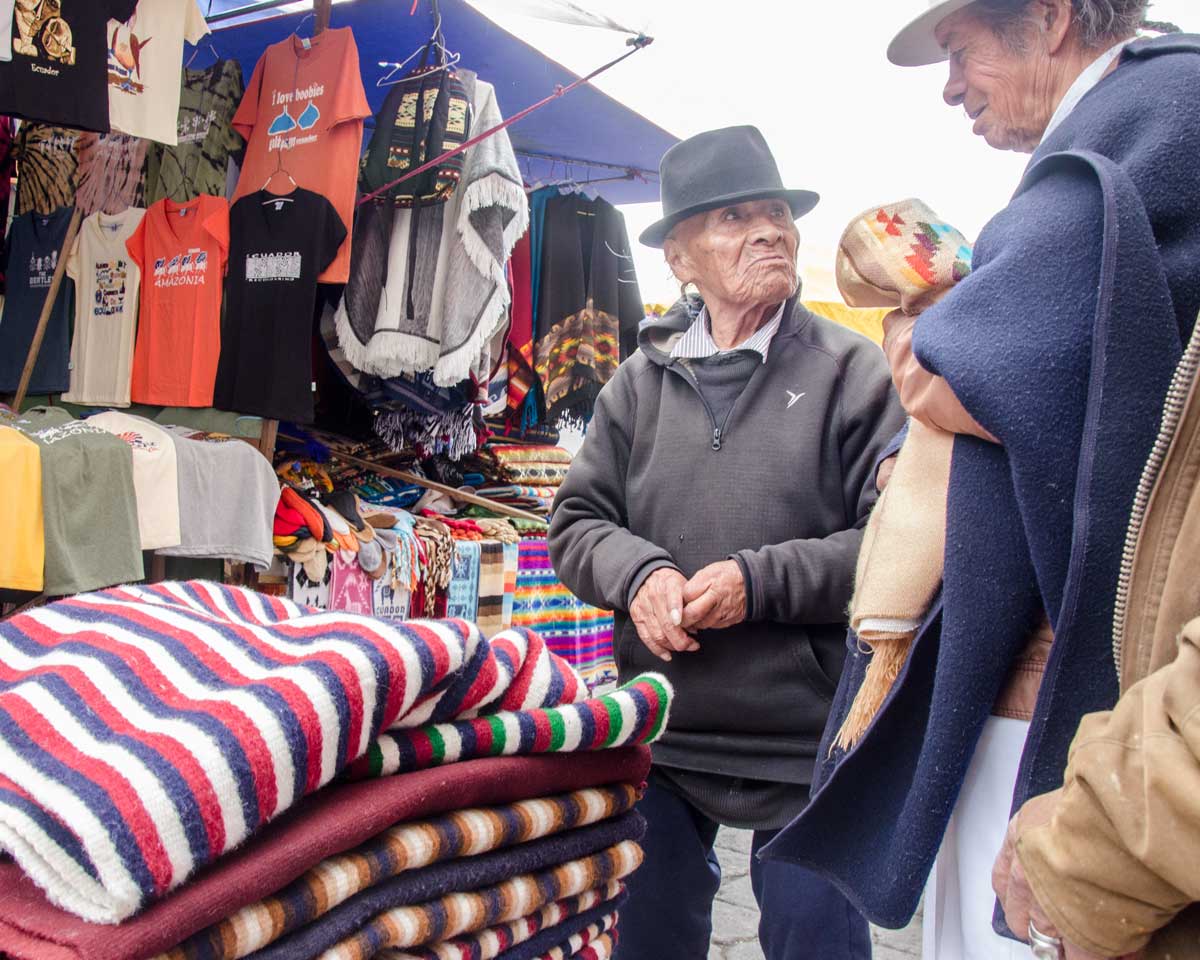
I think that, if I spend any more time describing this beautiful province, I will never get to the subject at hand, the summit of Taita or Yaya Imbabura. I am left with the desire to tell you about Chaltura, Chachimbiro, San Antonio de Ibarra, El Valle del Chota, Yahuarcocha, etc. I am tempted to write more about Imbabura in the future; because now, in truth, I have to continue on my adventure to the summit of the petulant Imbabura.
Early Rising
When we want to visit the mountains, the first requirement is to get up early! It is non-negotiable, especially on this occasion. I left home at three in the morning to meet with the hiking group in the community of San Clemente, the same one that is located on the northwestern face of the Imbabura. To reach the site, you cut off the Cayambe-Olmedo-Zuleta-La Esperanza-San Clemente route.
When we arrived in San Clemente, we left the vehicles to take a van a few kilometers further up. But before that, we received the greeting of my good friend, Manuel Guatemal, and his wife Laurita. Not having seen each other for so long produced an indescribable emotion. The innate generosity of these great friends as they welcomed me with gifts of chili, lemongrass, chard, and a condiment made from secret ingredients.

The morning was very clear and our spirits were high. Everything predicted that we would reach the summit with a magical blue sky and a dreamlike landscape. The “Padre” was there and appeared in a good mood. We begin to climb through the middle of grasses that always made me feel like I am walking in the middle of golden spikes filled with rabbits, small reptiles, and pollinating insects. In addition to this typical Andean landscape, Imbabura is reputed to be a strategic site to find the famous hallucinogenic mushrooms(Psylosibe cubensis). Although it is not easy to find them, they are always present. On the way I imagined those years of love and peace, when the great Bob Dylan was walking around this same place, looking for these famous mushrooms, I was transported back in time. For an instant, some Bob melodies came to me: “anything goes when you have to climb an imposing mountain and all the time up”.
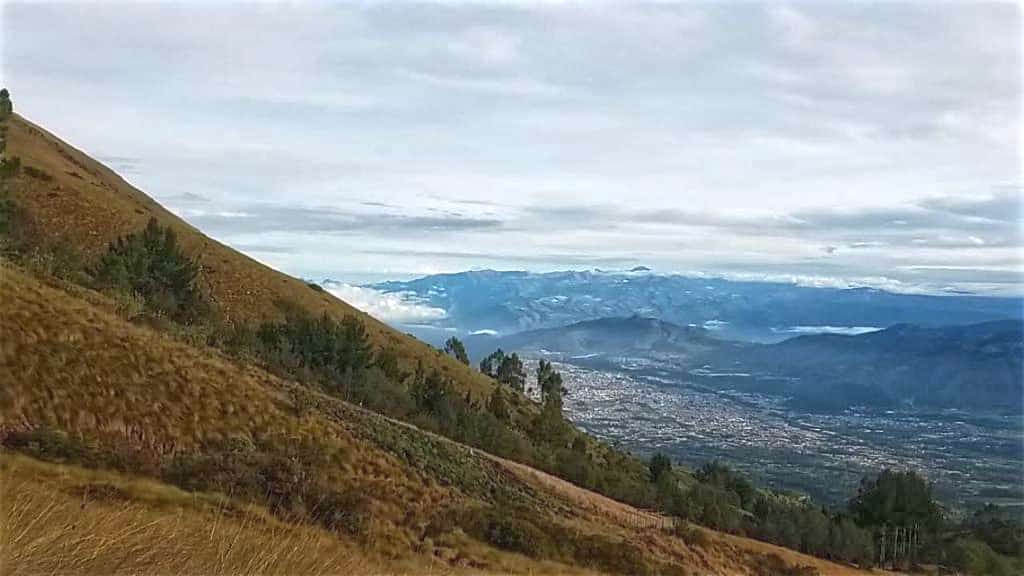
The Climb
We all knew that the Yaya Imbabura, apart from being imposing, is also extremely exhausting. This day, it certainly seemed so; the climb became a pathway to “purgatory”. The grasses did not stop dancing and dancing, giving the feeling that they laughed when they saw our faces of fatigue and despair to reach a flat on the hike. However, there was a great consolation to be had. We were able to stop many times to take pictures and witness the majesty of trekking in the mountains, looking in all directions, feeling that unique emotion to see so much beauty.
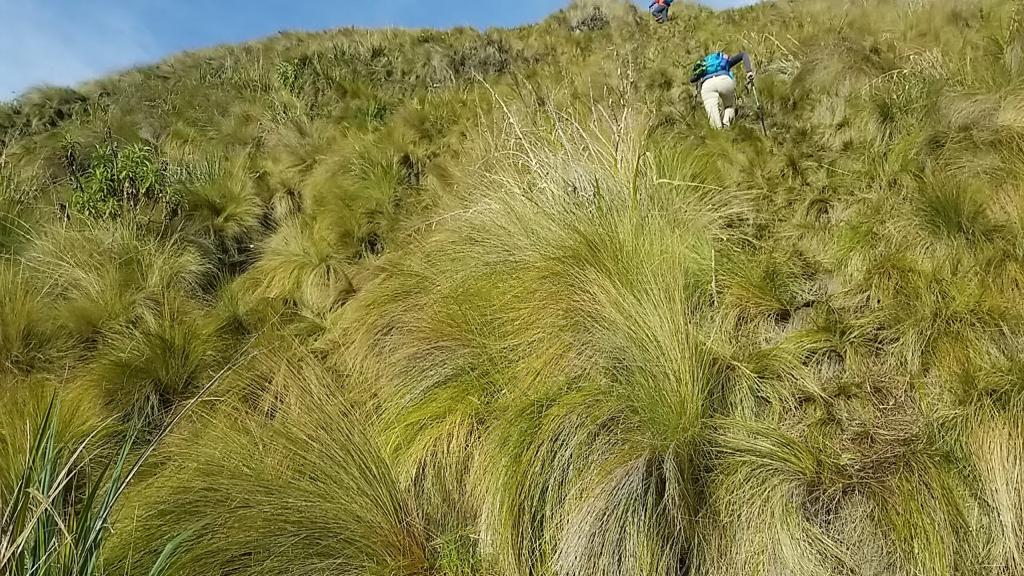
Remember that until now we had hoped to reach the summit (at least the first) accompanied by the sun. However, with the passing of the hours, the petulant Imbabura was beginning to show his bad character. The blue sky was gradually turning gray. In a matter of minutes, the excitement of taking photos and the golden grasses were under the shadow of clouds. All that was left was the desire to reach at least the first summit (4,570 meters above sea level).
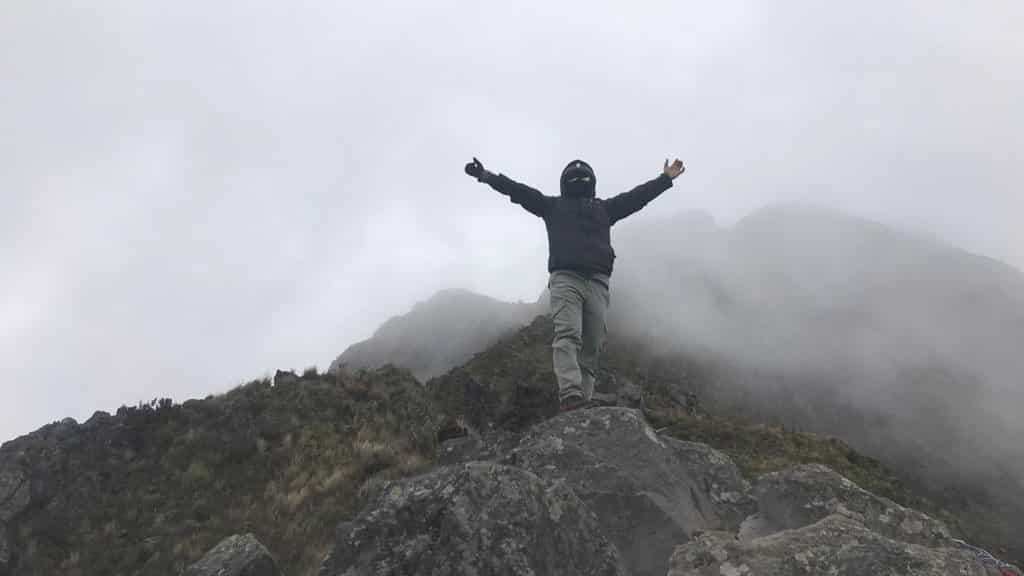
Three hours had already passed when we arrived at a small resting place. Here the landscape changed. The grasses disappeared as we started the rock climbing. We were at 4,240 meters above sea level, in the place called “Polylepis Forest”. In a moment, the clouds cleared and we could appreciate the towns of Cotacachi, Atuntaqui, Otavalo, and a little of the capital of the province, Ibarra, far below.
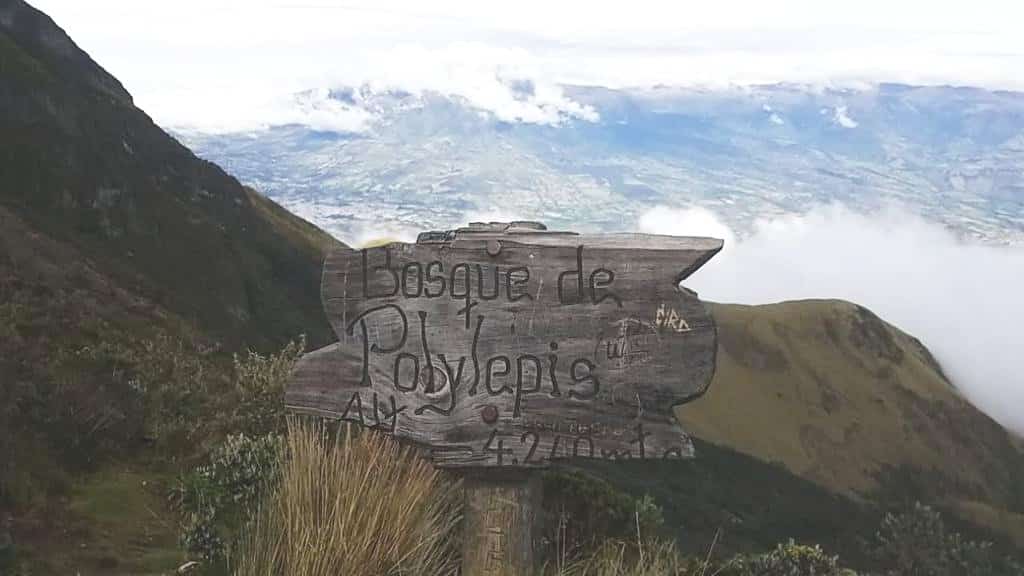
Climb to the First Summit
In the Polylepis Forest, we had a very short time to recover our energy and continue upwards. As always, our tireless guide, Miguel, pressured us to continue because “we were just starting the adventure”. While I was almost dead of tiredness. Ana Lucía and Edwin, a couple of friends in the group, were feeling great and continued as if nothing had happened. The restless Luis (you will know why “restless” further on) and I follow in the footsteps of the rest. Luis had already tried to summit the Taita a week before, but it went rather poorly since his comfy Adidas pants were reduced to threads (testimony of Luis himself) when a merciless downpour had fallen. He was never able to reach the summit. On the contrary, he literally had to descend “sitting” in the middle of water, mud, grass, and storm. For that and more, Imbabura provided a challenge tinged with revenge for my hiking partner who is always willing to climb the most extreme places with a ton of adrenaline (that’s why he is the “restless” Luis).
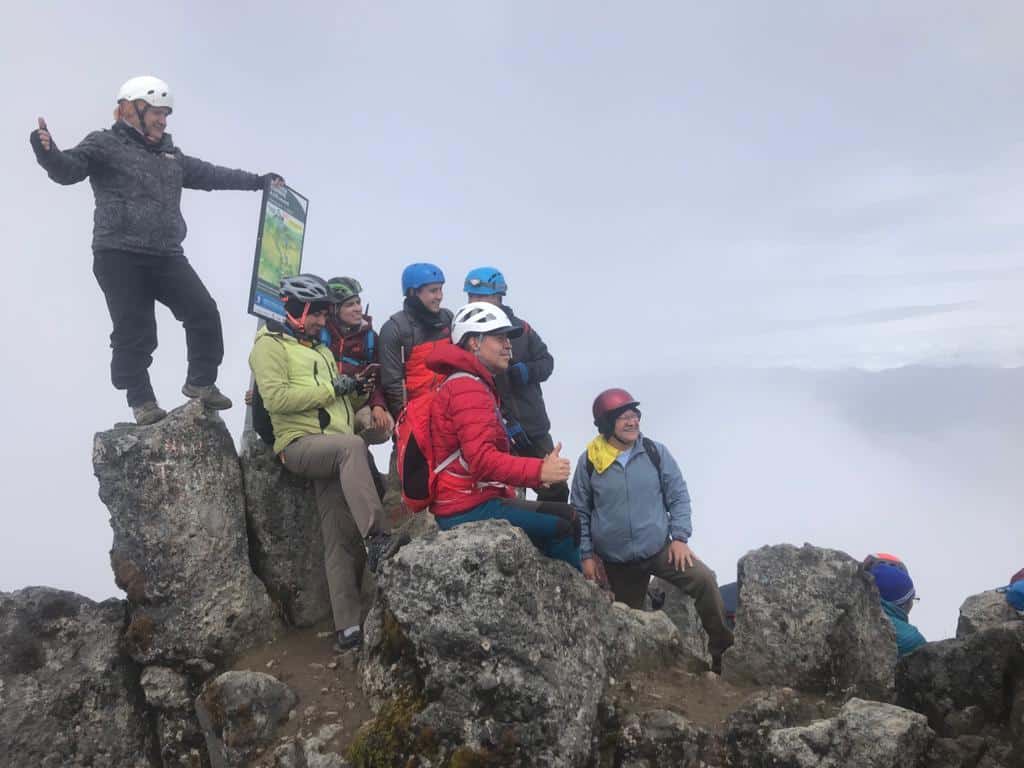
Back to the climb, we continued for one more hour in the middle of a fog that never gave us respite. The visibility was very poor. Finally, we reach the long-awaited first summit. Yes, we had reached 4,570 meters! It is worth highlighting a single detail: we were not the only ones climbing the colossus that day. Other groups did the same and suffered just like us (“suffering” I mean an expression of tiredness nothing more). Once at the first summit, many decided to end the adventure and being the return, something that we were not going to allow. With such a group of adventurers, it would simply be a sin in the mountaineering world to give up, unless the weather actually warrants it.
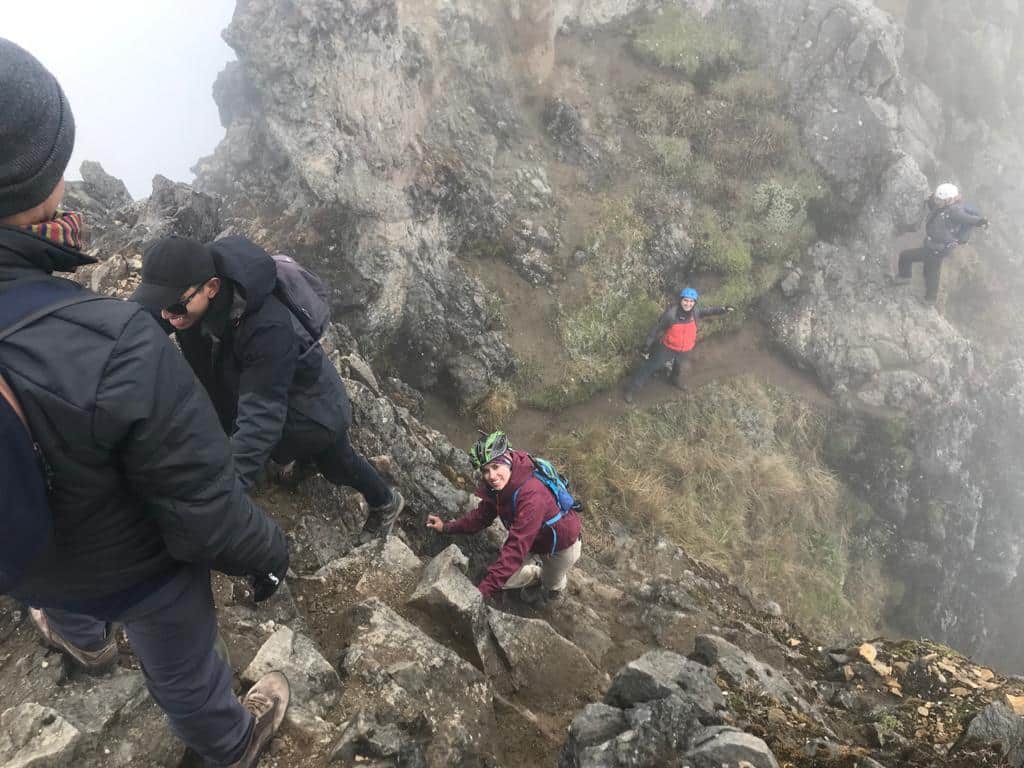
Second Summit
The stop at the first summit lasted a maximum of ten minutes. We had transformed into steel climbers and our focus was on the maximum summit 4,640 meters above sea level. After all, we already had four hours of climbing under our belts. To walk one hour more was nothing to fear!
We said goodbye to the other groups that reached the first summit, including Miguel’s brother (José) who was afraid to worsen an injury that occurred a long time ago. He preferred to return healthy. Here I want to stop for a moment and highlight the brotherhood that exists in the mountain; the other explorers shared their snacks, their good wishes, and even their advice to reach the highest summit. Were they our friends? Well, no, but that’s how brotherhood is in the middle of nowhere: solidarity, kindness, empathy, fraternity, and all the best that your fellow human being is willing to share. Is it necessary to climb so high to find this coexistence that proves our fellow man is really a humanitarian? This is one of the most sublime lessons of being a mountaineer.
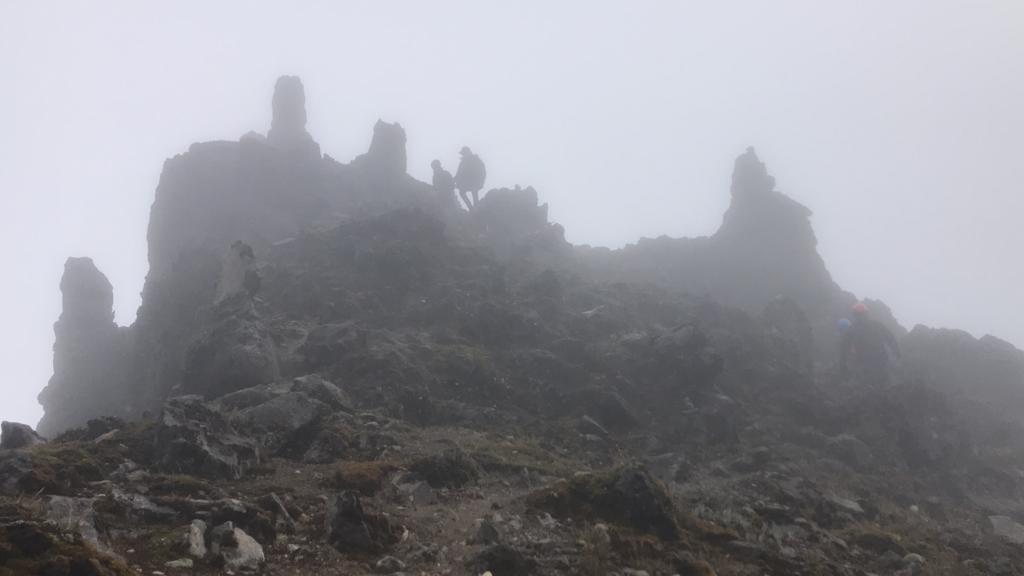
The route to the second summit was more exciting and the abysses on the right and left told us how imposing this volcano is. In this part of the journey, you can admire the last explosion and eruption of Yaya Imbabura. Despite not having a clear, blue sky, the landscape continued to amaze me. It reminded me of a scene in a film of yesteryear, “DRACULA” by Bram Stoker, when the carriage was dragged by jet black steeds that circumvented the deep abysses to arrive at the castle of the vampire Count. It was the most exciting hour of the whole ascent, little by little you could visualize the “castle” of my favorite movie; it was the ultimate summit. The words got stuck in my throat and I just wanted to dedicate this summit to my son Mateo and my mother; this was a feeling that surfaced from the bottom of my soul.
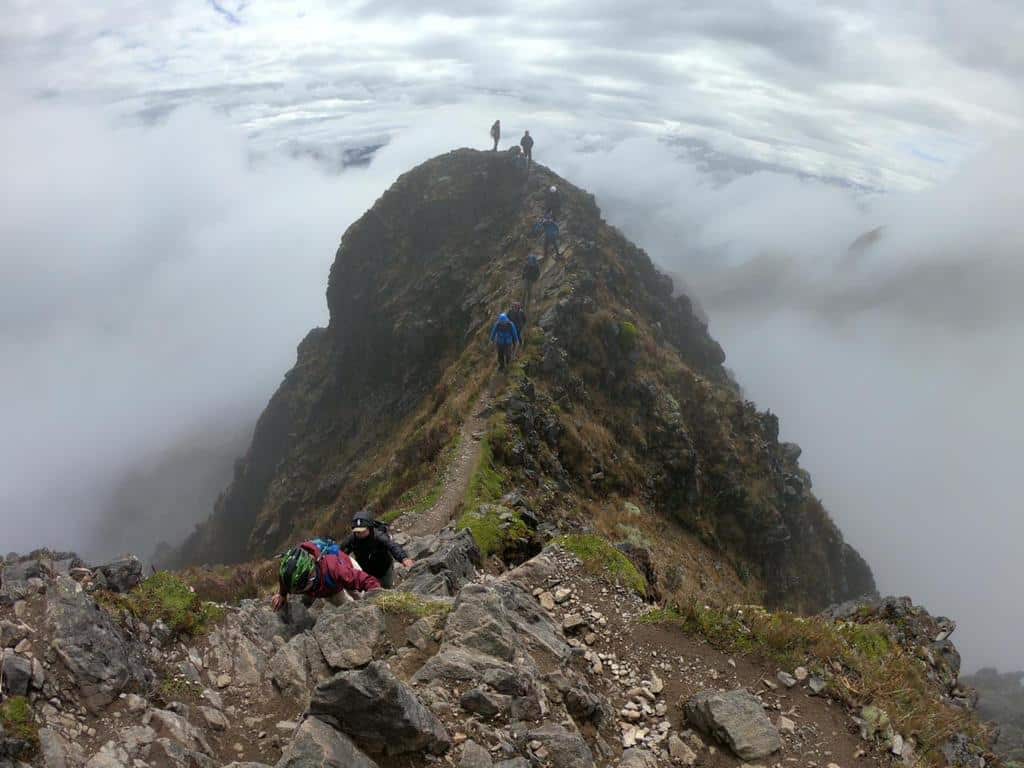
Once again, we had made it! Once again, I was on the highest part of the mountain; once again I had the opportunity to touch paradise. At the summit, my emotions crescendoed when I saw a small flag of Ecuador flying very proudly even though it had been mistreated by wind and weather.
Reaching the summit of Imbabura, standing next to the tricolor flag, was more than a poetic moment for me. So full of sensations, it ended with a couple of tears of emotion and pride for this beautiful land called ECUADOR. I should mention that it was not really important to have a clear sky or the longed-for blue of the firmament. It was enough to know that we had reached the summit of the Taita of the north, adored and revered by all his children who live at his feet. In truth, this mountain will leave a very special memory to those who dare to climb and admire it.
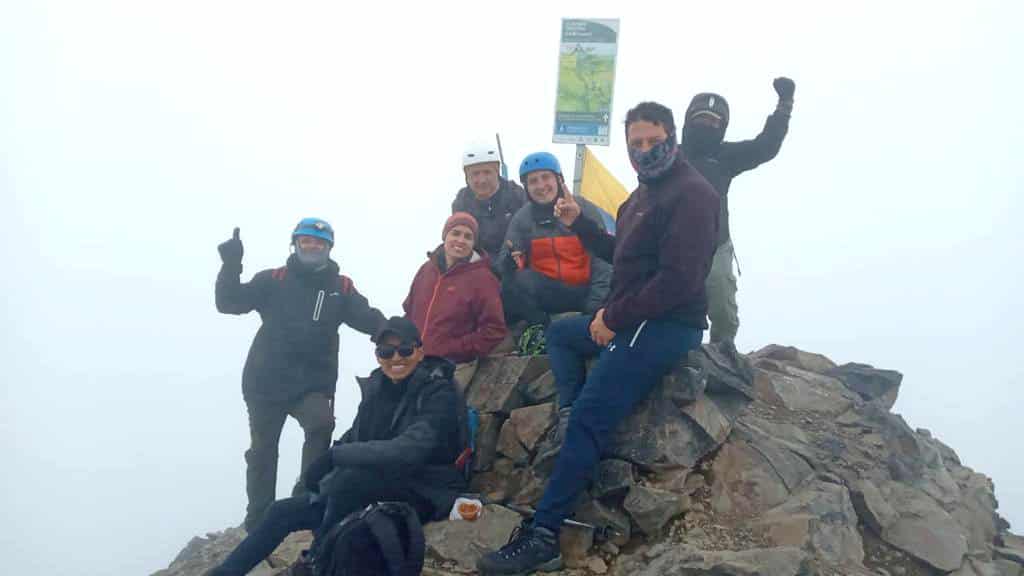
The Return
A visit to the mountain resembles “a doctor’s visit” because there is not much time to talk and the farewell is rapid because you have to return to the “concrete jungle”. If the climb was strenuous, now I tell you the descent…
Silence was the theme of the return. In the first part, I suspect that we all had mixed feelings and strong emotions remembering our personal experiences. Going down a mountain is often more difficult than climbing up. Imbabura, without becoming the Illiniza Sur (the Ecuadorian K2), provides its portion of danger and adrenaline. The interesting thing about the first part of the return was the rock. Despite the fatigue, I could not leave without taking a souvenir for posterity, a flat stone needed to prepare una carne a la piedra (meat grilled on a stone).
The descent was very complicated, even more so when you have knee problems. I have a pirate knee, the right. Each step created increasingly intense pain. Already, we had spent over 7 hours on the mountain. Still, we had not yet reached the grassy pajonal. The fog was our faithful companion giving us a feeling of greater fatigue. Finally, the expected grassy slope jumped into view, and it was time to make an imperative decision: take off my shoes or leave them on. I took off my shoes and went down with my feet bare. Advantageously, I usually do that when the earth is wet so that I can descend without much inconvenience.
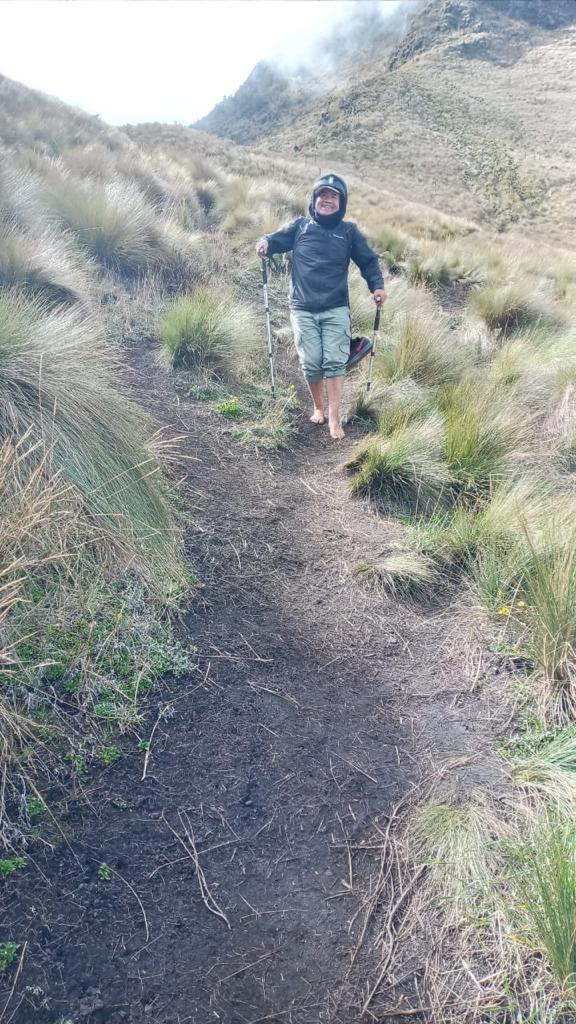
Together with Luis and José Miguel, another experienced mountain guide, we descended to the end. The pajonal was no longer a place of inspiration. Now it was an eternal endless descent where at times we went down on our backs so that our battered knees could rest, sometimes we used mountain poles, or at times returned to hiking straight down. The rest of the group was quite far away and the end was not on the horizon.
After ten hours on the mountain, we finally arrived. From the top, the old Imbabura cleared once again and said goodbye. He was only laughing at this mountaineer without shoes. Thus we arrived at the end of this beautiful excursion, where we had both a beginning and an ending. The before was the climb full of emotion and adrenaline to conquer the desired highest summit. The after was the eternal return where I did a little bit of everything to reach the final goal.
Thank you Yaya Imbabura! This visit was a great lesson in life, perseverance, respect, and humility. I believe after having passed this “litmus test”, the mountaineer will know that he is prepared for bigger things and more imposing challenges in life.

